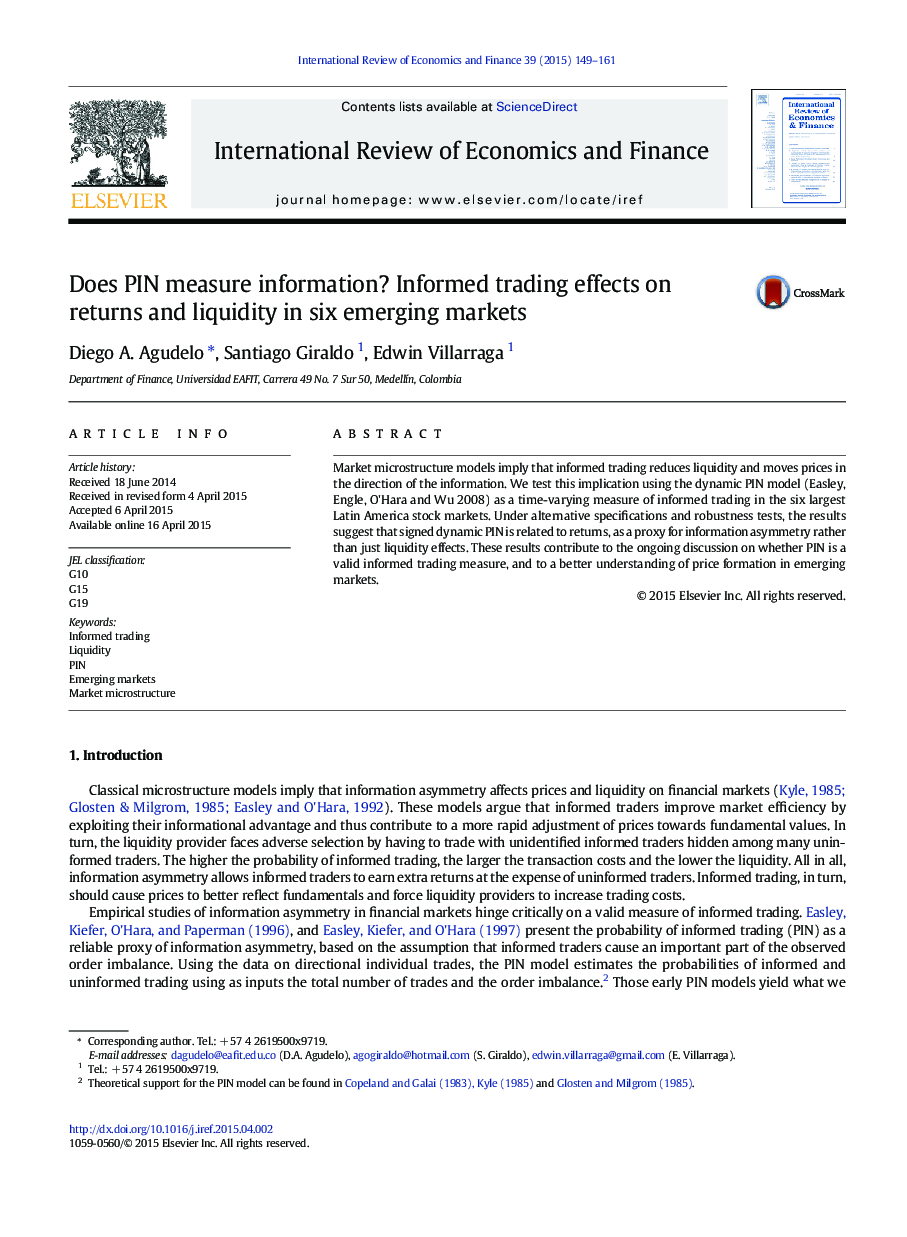| Article ID | Journal | Published Year | Pages | File Type |
|---|---|---|---|---|
| 5083517 | International Review of Economics & Finance | 2015 | 13 Pages |
â¢Informed trading is theoretically related to both liquidity and returns.â¢There is an ongoing dispute on whether PIN measures informed trading.â¢We test this using a dynamic PIN measure in six emerging stock markets.â¢The results show that PIN is negatively related to liquidity, as expected.â¢Signed PIN is related to returns, controlling for liquidity effects, as expected.
Market microstructure models imply that informed trading reduces liquidity and moves prices in the direction of the information. We test this implication using the dynamic PIN model (Easley, Engle, O'Hara and Wu 2008) as a time-varying measure of informed trading in the six largest Latin America stock markets. Under alternative specifications and robustness tests, the results suggest that signed dynamic PIN is related to returns, as a proxy for information asymmetry rather than just liquidity effects. These results contribute to the ongoing discussion on whether PIN is a valid informed trading measure, and to a better understanding of price formation in emerging markets.
